4 Household Shelter Makeovers To Fit Your HDB Home Interior
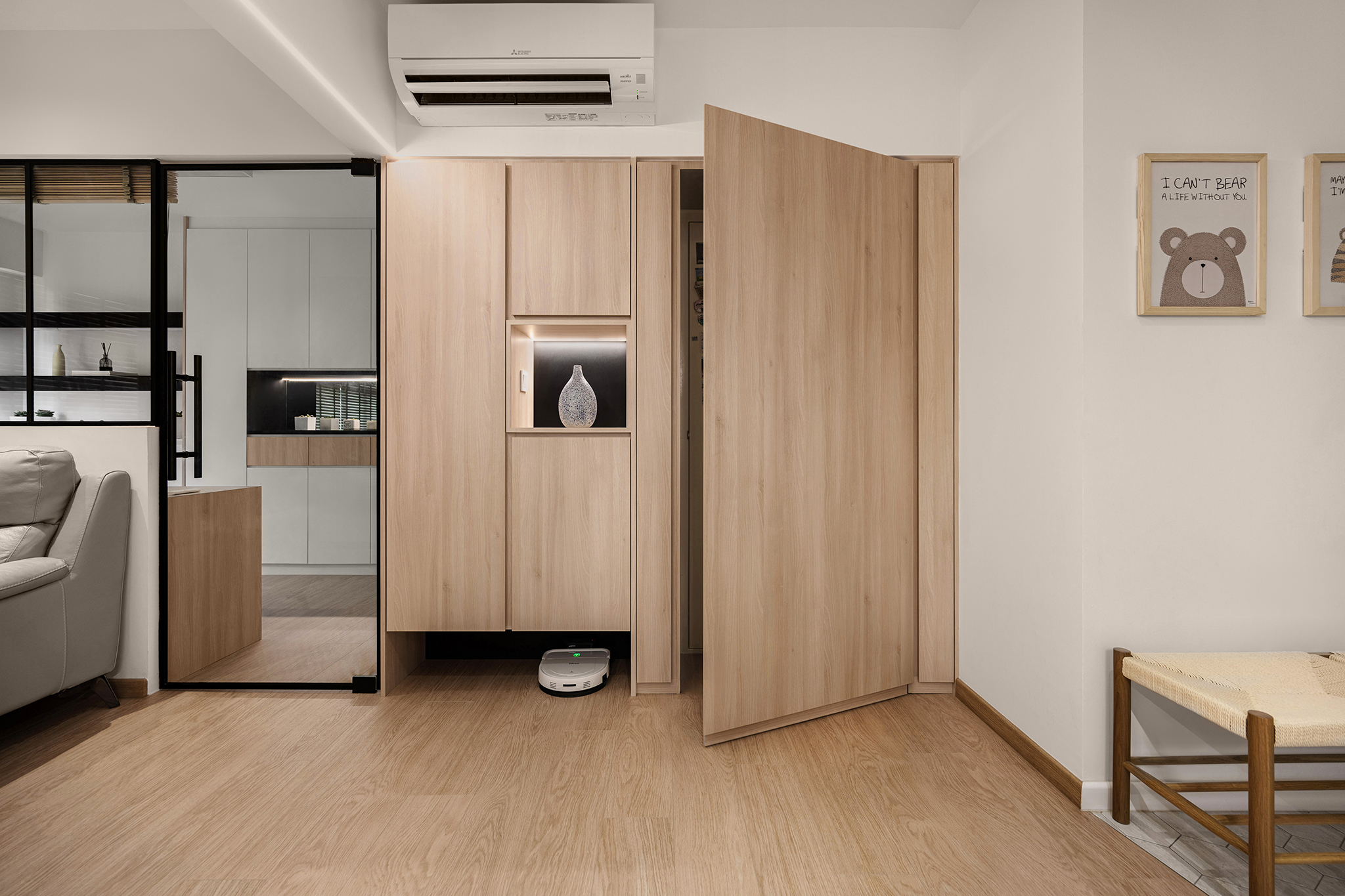
Blast away the boring and blend your household shelter seamlessly into your home.
Household shelters, commonly termed “bomb shelters” by Singaporeans, are a feature that all HDB flats built after 1996 are equipped with. With a door and surrounding walls, floor and ceiling designed to protect you in emergency situations, the household shelter is an important part of the home.
Yet, it is undeniable that the door to the household shelter can stick out like a sore thumb amidst your beautifully designed home. With restrictions on what can be done to the door and walls surrounding the shelter, it may seem almost impossible to art up or blend it into your home’s interior style. Fret not, let us bring you through 4 works that can be done to the household shelter to make it less jarring alongside your home design.
Colour Matching
As with fashion, colour coordination is one of the key considerations in interior design. For coherence in interior style, matching colours across the spaces in your home is generally recommended. Since carpentry tends to take up a fair bit of vertical space in the communal area, matching the colour of your household shelter’s blast door to the colour that dominates your carpentry would be one way to blend it seamlessly into your home interior.
This home has its household shelter in the kitchen area. Painted a matte black like the surrounding cabinetry, the blast door lends itself to completing the modern industrial interior style. That said, should you decide to paint your blast door, the old paint coat must be removed first. This is to keep the paint layer thin and ensure that the opening and closing of the blast door is not affected.
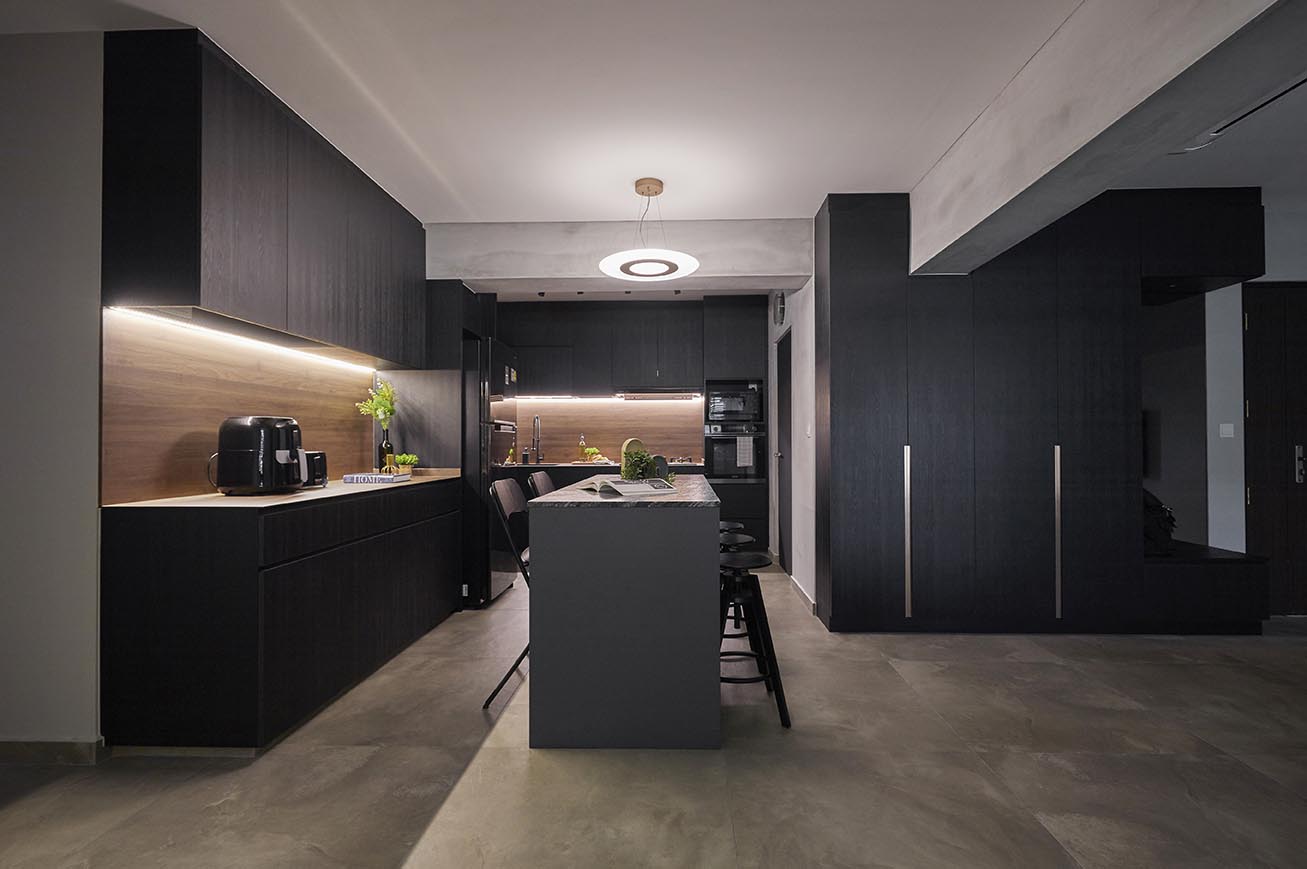
Conceal Within Carpentry
As colour matching leaves the blast door out in the open and may still feel like an eyesore to some, one way to completely hide it would be to build carpentry over the door. This would work for household shelters that are located along a length of wall on its own, wide enough to cater for a sizable cabinetry or display shelves.
Several alternatives can be considered for the piece of carpentry concealing the household shelter. A thin panel that levels with surrounding cabinetry works well, additional hidden shelving can also be considered if the depth of your carpentry allows for it. For household shelters located by the front door, you can build a hidden shoe cabinet to put your shoes out of sight as well!

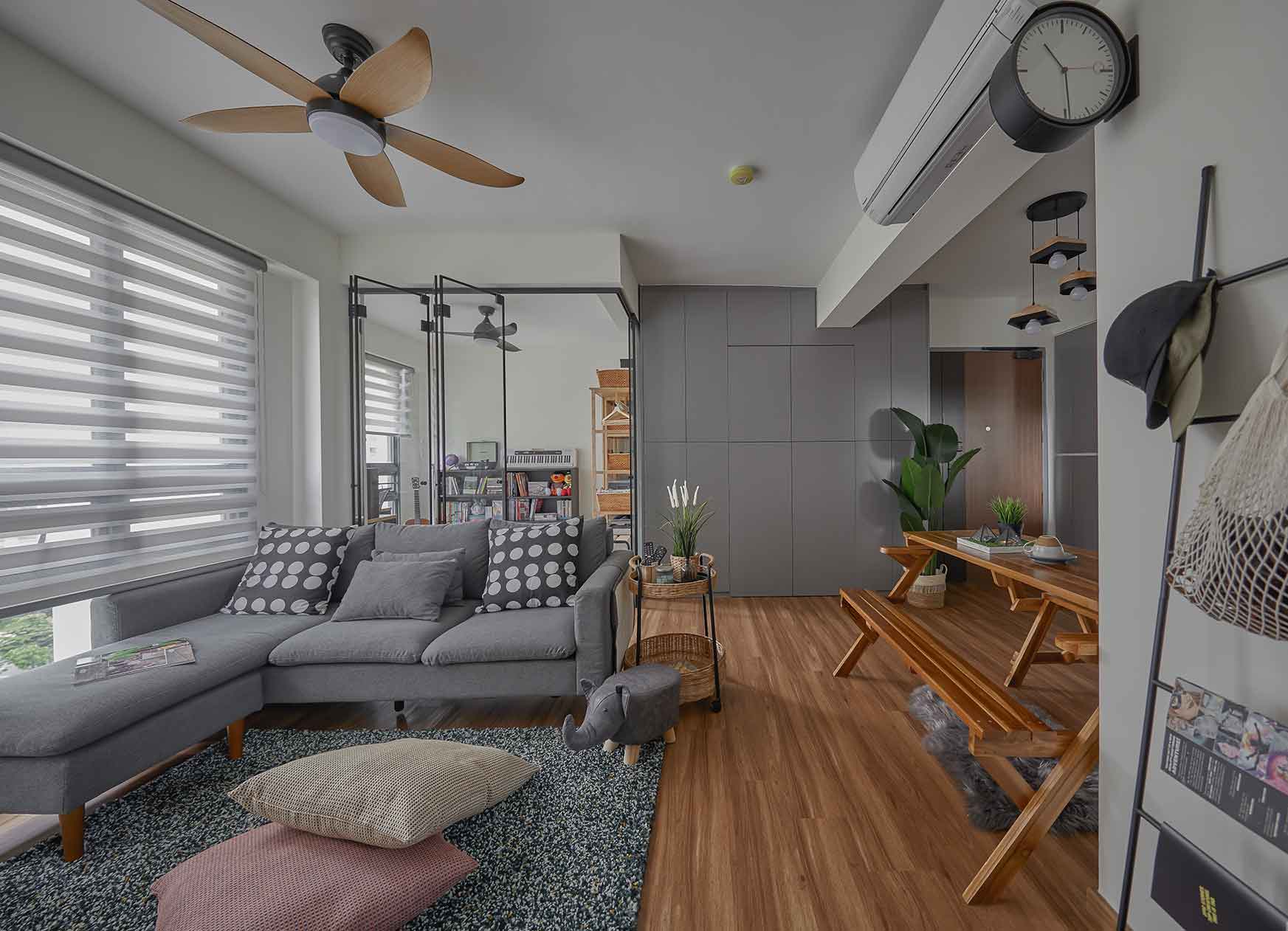
Camouflage In A Feature Wall
Aside from cabinetry, the household shelter can also be camouflaged amidst a wall feature. Wall cladding such as a fluted panel can hide the door amidst its vertical strips. Fluting is also a popular choice as it visually stretches a space, expanding it vertically and making your ceilings look higher than they actually are.
Alternatively, a feature wall decked out in a bold patterned wallpaper can also work wonders in making the presence of your household shelter less obvious.
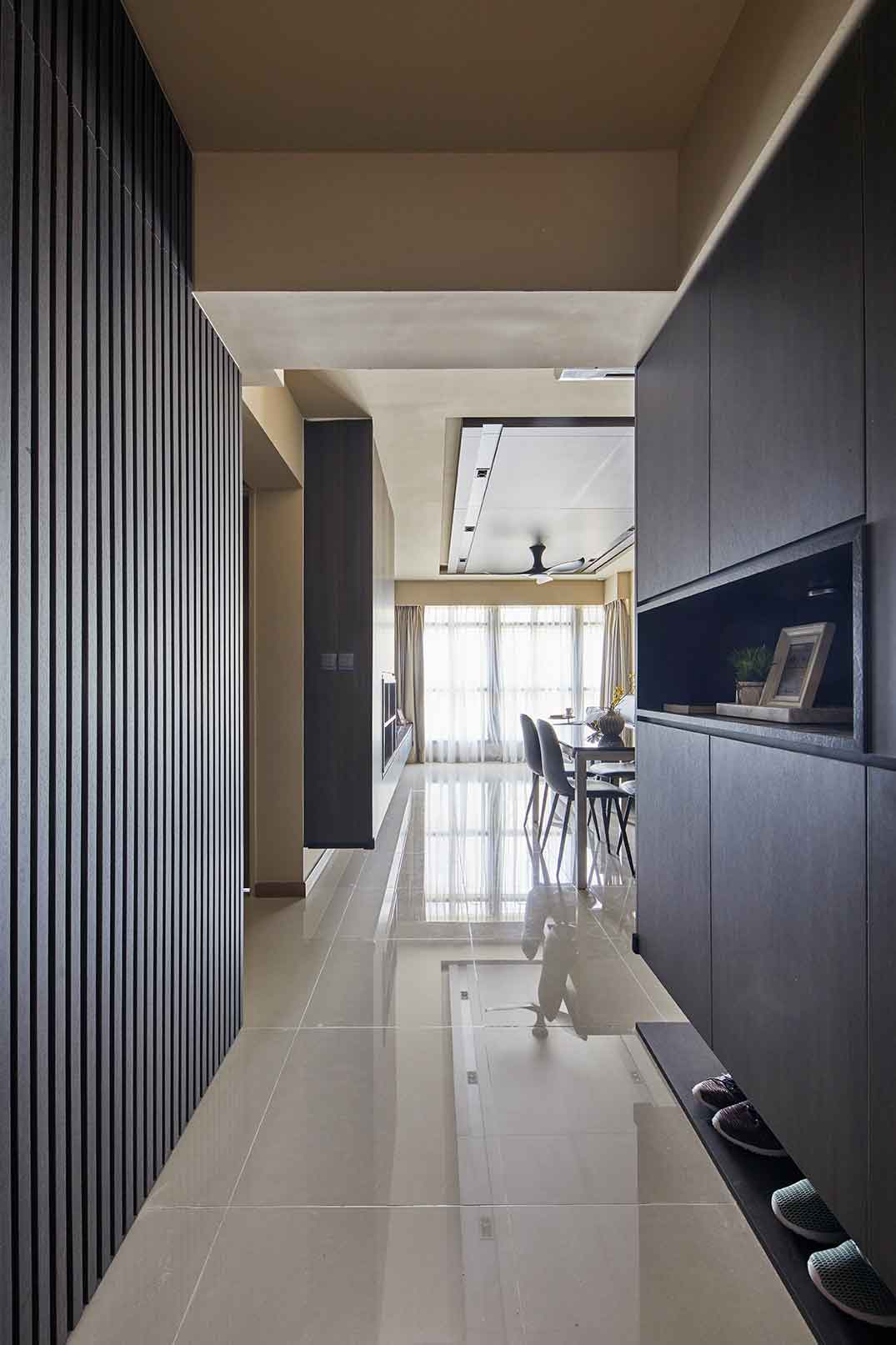
Make A Statement
When all else fails, or rather if painting or carpentry do not fit your interior style or budget, go for the opposite. While most people work to hide their household shelters, why not make a statement with yours?
As collectors of vintage items, this apartment exudes an air of playfulness that lightens its predominantly modern industrial interior. Instead of concealing their household shelter, the homeowners opted to adorn their blast door with a “danger” sign similar to those found outside switchrooms or electrical substations. Such apt or quirky signs, posters and decals can in fact inject some personality into your home interior, enabling your household shelter to fit the overall look of the space.
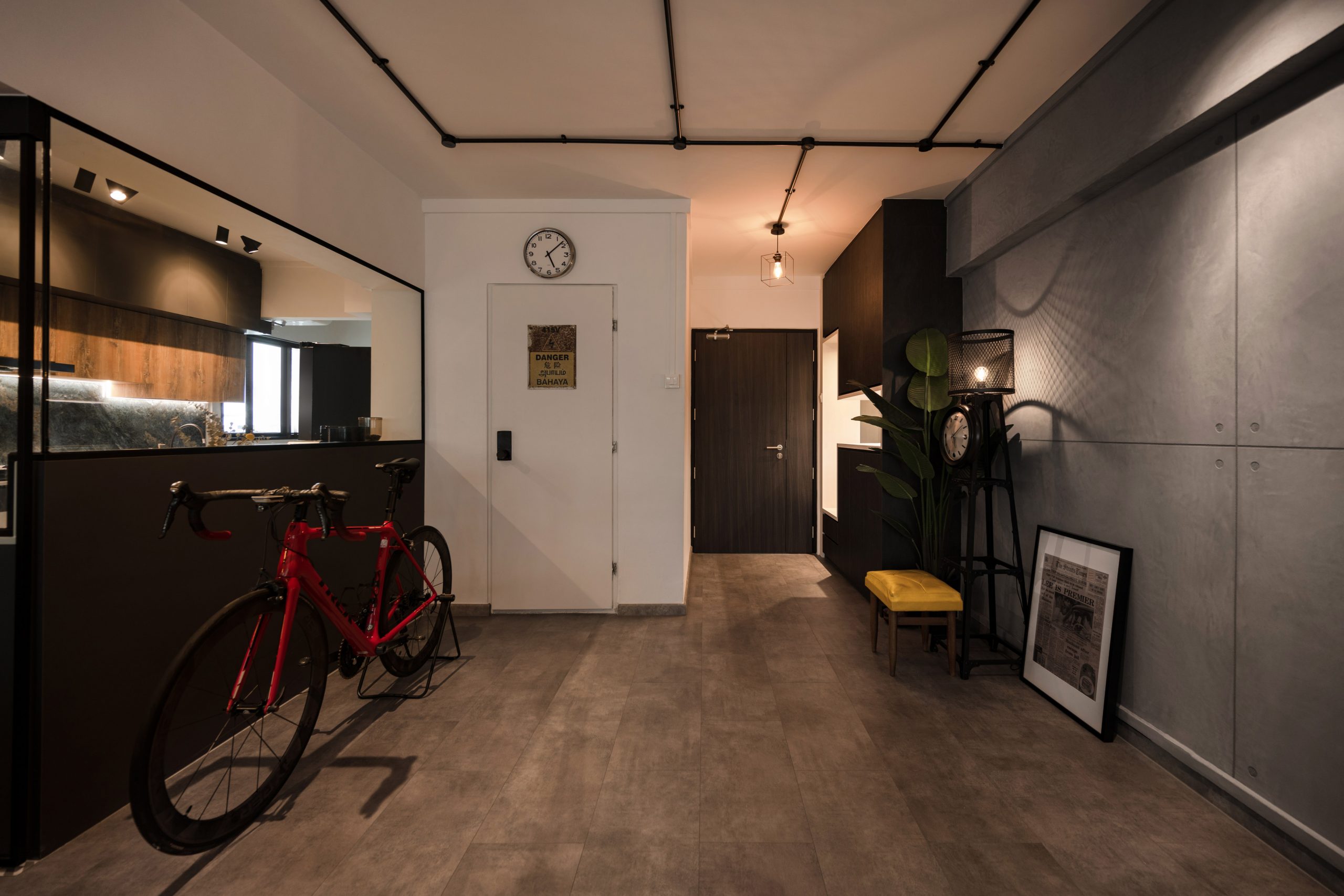
Some homeowners also choose to use the space as a gallery wall to display family photographs or memorabilia from travels abroad. While uncommon, some do choose to coat their blast doors with chalkboard paint instead of regular paint, thus converting it into a space for creativity.
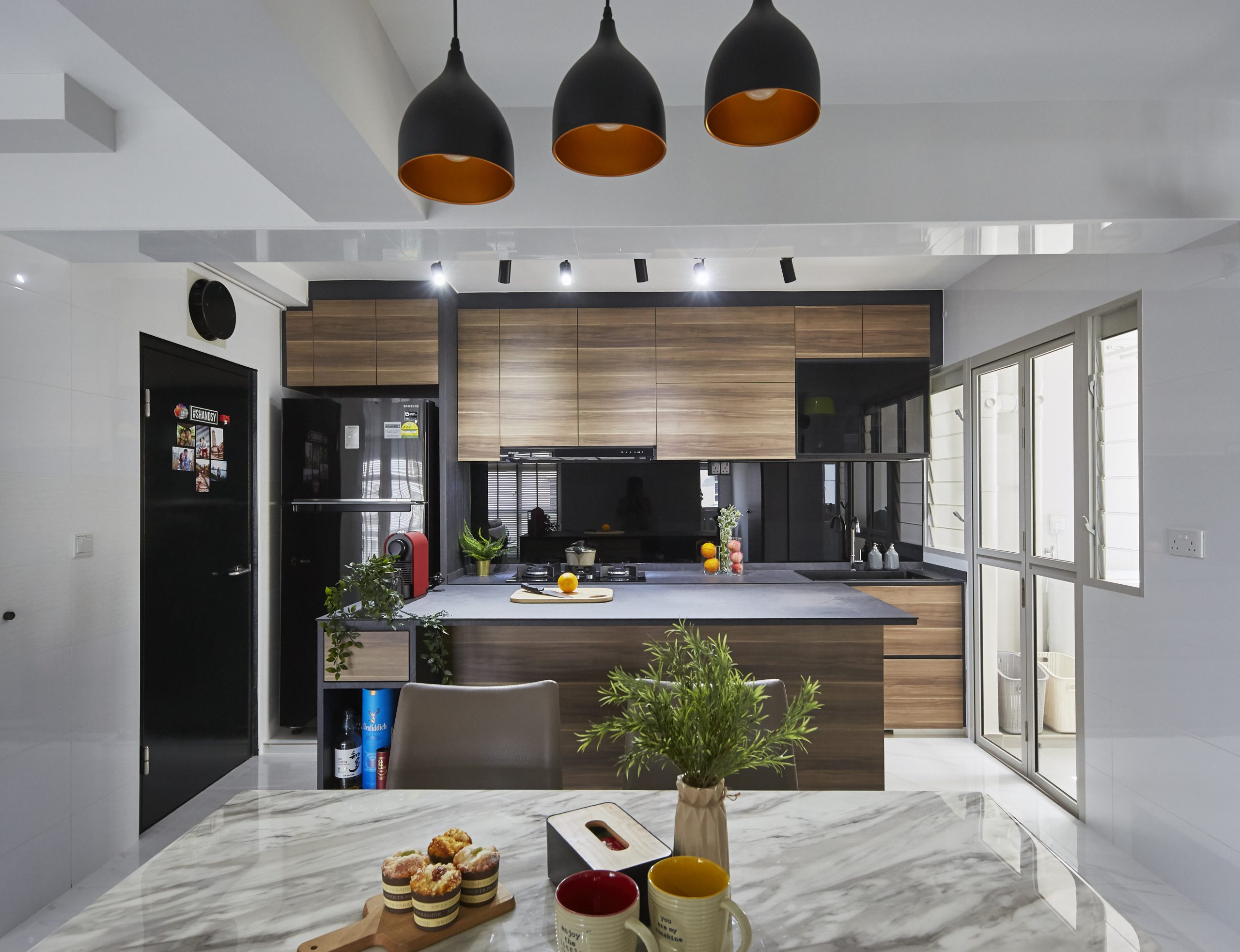
There are several more creative ways to infuse your household shelter into your home interior design (think faux green walls and customised carpentry). That said, do take note of the dos and don’ts for modifications around and on the bomb shelter’s door and walls before you confirm any of your plans to revamp it.
CONSULT OUR DESIGNER
- 11 April 2025 TIPS & GUIDES
Wet and Dry Kitchens in Singapore Homes: What Are They And Do You Need Both?
- 8 April 2025 TIPS & GUIDES
How to Mix Scandinavian & Asian Elements for a Unique Look
- 8 April 2025 TIPS & GUIDES
The Golden Ratio in Interior Design: Balance Your Singapore Home
- 8 April 2025 TIPS & GUIDES
Transform Your HDB with Modern Luxury Interior Design
- 8 April 2025 TIPS & GUIDES
How to Blend Traditional Elegance with Modern Luxury Design
- 28 March 2025 TIPS & GUIDES
Biophilic Interior Design: Beyond The Aesthetics






 BACK TO BLOG
BACK TO BLOG